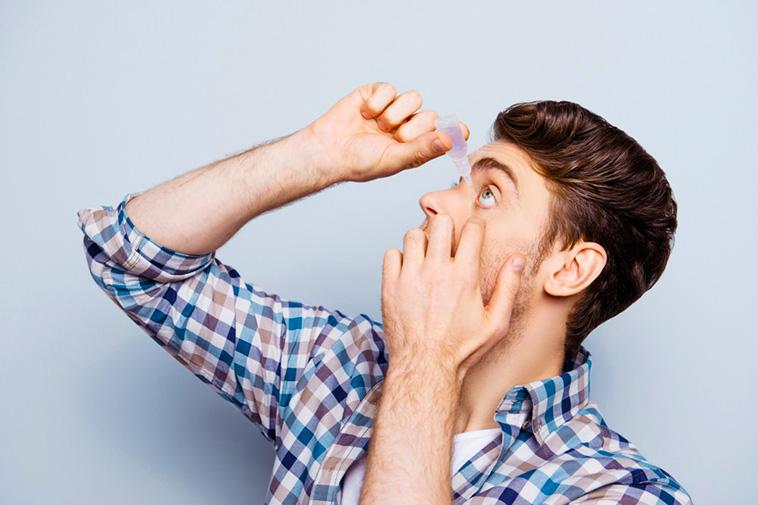You Could Soon Throw Away Contact Lenses and Spectacles with Nano-Drops

Have you ever thought about what would happen if people had a chance to correct their eyesight without having to wear spectacles and contact lenses? What if you could choose to correct your eye problems without having to resort to any of these? In Europe alone, 48.34 percent of the population wears spectacles on average.
Slovakia has the largest percentage of people wearing spectacles across Europe at 85 percent of the population, followed by Serbia, United Kingdom, Denmark, Finland and Norway at 70, 68, 65, 65 and 63 percent respectively. Among teenagers and children between age 6 and 17 years, particularly in the United States, 36.2 percent of girls wear contact lenses or eye glasses while 29.1 percent of boys wear them. In fact, 51.9 percent of girls between 14 and 17 years of age were found to be more likely to wear contact lenses and eyeglasses than boys of the same age at 38.8 percent.
Apparently, you could soon have the option to maintain perfect vision without your contacts or glasses.
Breakthrough cornea-repairing eye drops
Ophthalmologists at BINA (Bar-IIan University’s Institute of Nanotechnology and Advanced Materials) and Jerusalem’s Shaare Zedek Medical Center reported in 2018 a successful development of cornea repair with eyedrops that was able to improve both far-sighted and near-sighted eye problems. The ‘Nano-Drops’ as called, were studied fruitfully on animal corneas with clinical trials on human beings soon to start. If the same success will be replicated in people, the revolutionary invention will help people improve their vision without the need for contact lenses and spectacles.
Synthetic solution of nanoparticle is used to create the Nano-Drops capable of correcting issues related to vision on the cornea. The solution once successful will be provided without the need for eye surgery and is capable of 20/20 eyesight restoration without having to go through invasive eye procedures.
Harnessing nanotechnology
The Nano-Drops as indicated have been developed successfully with the aid of nanotechnology. In itself, nanotechnology is a wide field of study that revolves around manipulation and creation of materials from the smallest particle size, mostly particles with a width of 1 nm (nanometer) to 1000nm. A simple hair in a human head, for contrastive purposes, has a width of between 60,000nm and 80,000nm.
Common eyesight issues addressed
With the Nano-Drops the developers seek to deal with three common vision problems in humans; blurriness that comes with age known as presbyopia, near-sightedness or myopia and far-sightedness or hyperopia. The three eyesight complications usually result in refractive errors where light curves wrongly as it moves into the eye leaving the image disordered. The issue is mostly interlinked with the lens that can be thicker than normal, curved cornea or short or long eyeballs. Nano-Drops, made of synthetic nanoparticles are able to correct refractive complications ending the issue of presbyopia, myopia and hyperopia.
Altering light before it enters the eye
Nano eye drops will seek to correct vision problems by altering how light enters the human eye. Firstly, a laser pattern (very unique to every person) is projected into the eye of the patient and right into the eye surface removing subtly some miniscule parts of a cornea; generally the cornea generated ablated patterns where the eye drops transform the index of refraction within the patterns correcting the eyesight complication afflicting the individual. While a typical invasive eye surgery via laser takes a while, the Nano-Drops procedure takes seconds.
Won’t be for everyone yet
With the Nano-Drops expected to hit the market within a few years, contact lenses and glasses will have to do. The initial research successfully corrected hyperopia and myopia problems in 10 pigs with test on rabbits on top gear and human clinical trials to follow thereafter. Even so, it’s worth noting that the Nano-Drops even if released now won’t be a permanent solution as many might think.
With the laser work on the cornea very infinitesimal, the natural process of healing in a person’s eyes will take place wearing off the drops. Treatment will need to be done every few months. Also, if you use heavy bifocals and strong contact lenses chances are the high-tech eye drops won’t help you much.
Nanoparticles effect on human eyes is also being studied, especially to see whether the buildup of such materials can be dangerous to human health over the course of their use and beyond.
